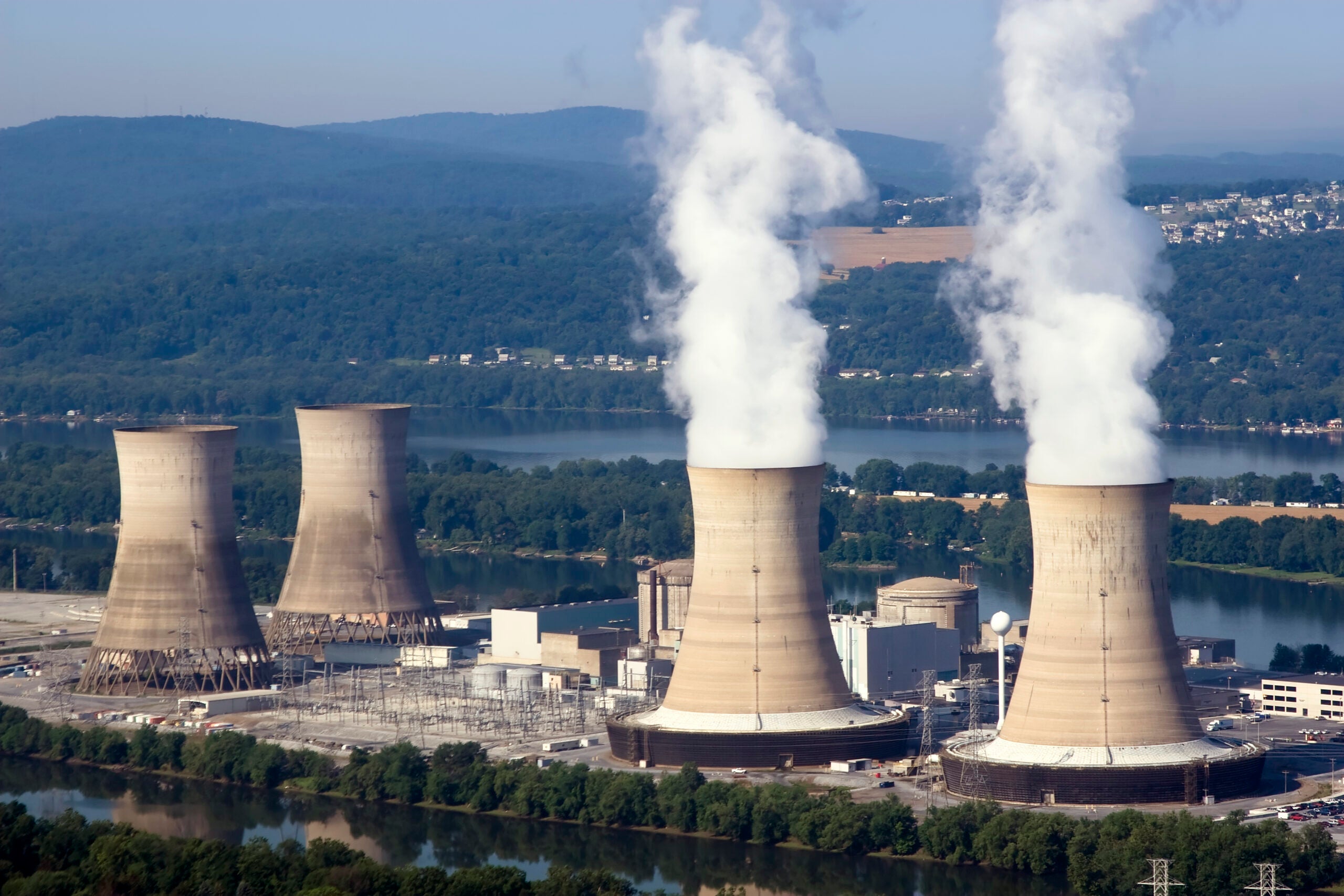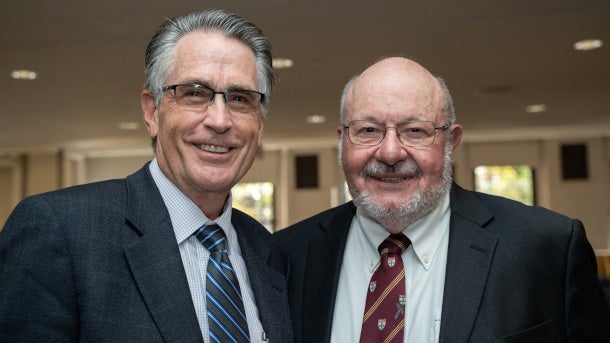What’s lost with NIOSH cuts: Q&A with David Christiani
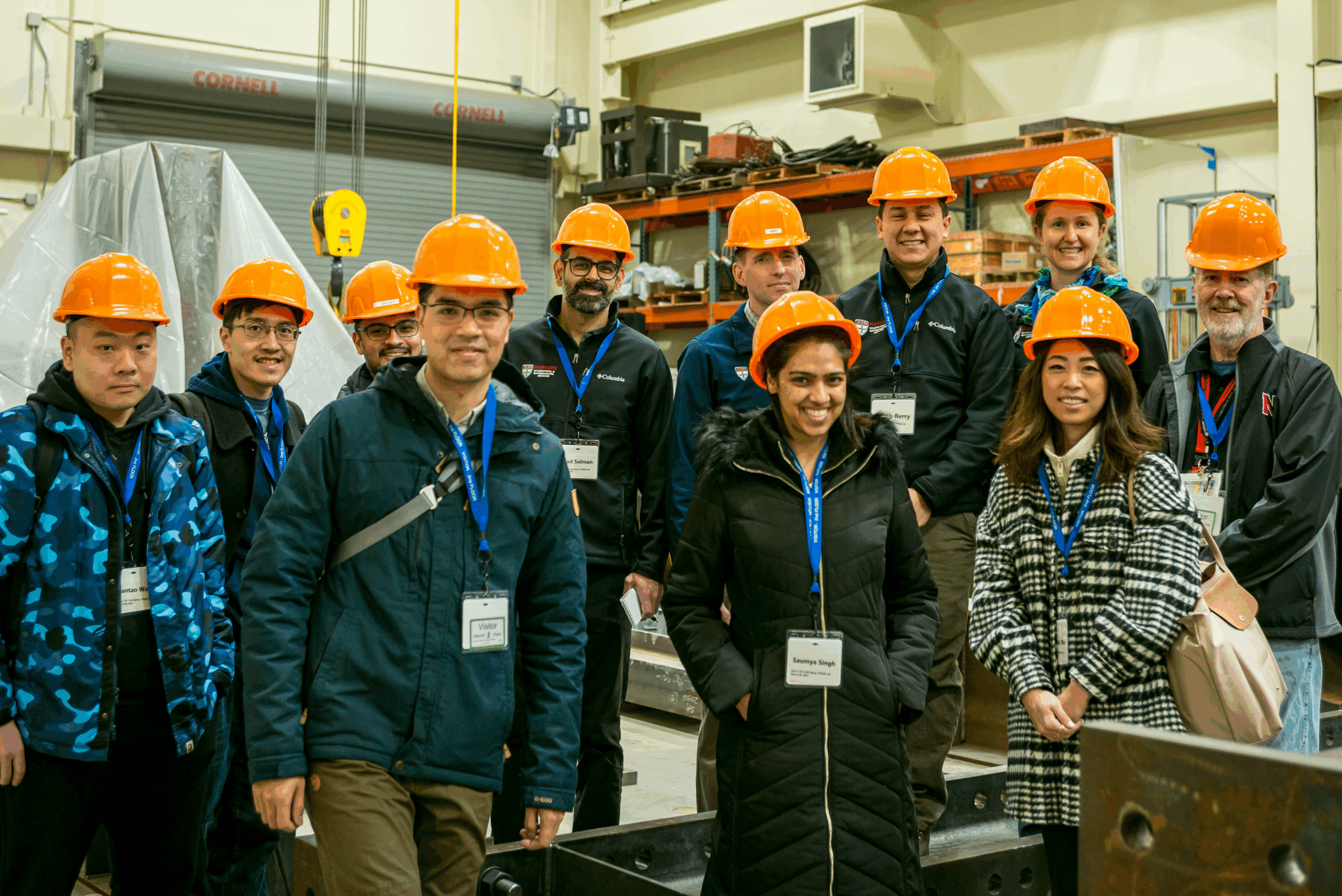
In April, the Trump administration announced cuts to the National Institute for Occupational Safety and Health (NIOSH). The planned cuts, which are scheduled to take effect June 1, will reduce the NIOSH workforce from approximately 1,400 full- and part-time employees to fewer than 150. While some workers in the coal miners’ health programs were granted reprieve last week, nearly all other NIOSH programs and divisions will still be eliminated.
The Harvard Chan Occupational Health and Safety Education and Research Center (ERC) is one of 18 regional centers across the United States funded by NIOSH. Founded in 1977, the ERC is dedicated to supporting the health and safety of workers through research and training. In addition to supporting research in the field of Occupational Health and Safety through its pilot project program, the ERC also supports trainees who are studying occupational health at Harvard Chan, creating a vital pipeline of new specialists into the fields on occupational medicine, industrial hygiene, occupational epidemiology, and more.
David Christiani is the Elkan Blout Professor of Environmental Genetics in the Department of Environmental Health at the Harvard T.H. Chan School of Public Health, and is a Professor of Medicine at Harvard Medical School. He is also the Director of the Harvard Chan ERC.
In a recent interview, Dr. Christiani explained the history of the ERC, the history of NIOSH and OSHA (Occupational Safety and Health Administration), and the critical importance of the field of occupational health for the safety of all American workers.
Can you tell us a bit about the history of NIOSH and OSHA?
DC: I think there’s a lot of confusion even among professionals about NIOSH versus OSHA: OSHA and NIOSH are essentially twins. They were born at the same time, created by the Occupational Safety and Health Act of 1970, which was established by a Congressional act signed by President Nixon at the time. The law created both agencies, NIOSH (in CDC) on the research and training side and OSHA (in Department of Labor) on the enforcement side.
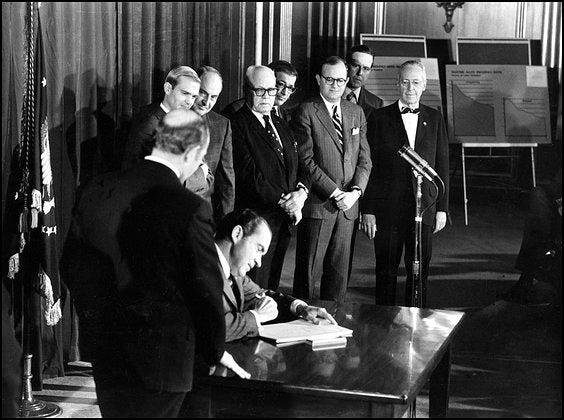
NIOSH was modeled on the National Institutes of Health (NIH). They have no enforcement power; they are there to do research and educate the public. NIOSH was set up to do research on occupational safety and health problems and to educate professional disciplines in the relevant fields in things like industrial hygiene and safety, occupational medicine, nursing, occupational psychology, occupational epidemiology, and occupational toxicology. And then, with input from the researchers at NIOSH and other agencies (NIEHS from NIH, and NSF for example), OSHA sets the safety standards and regulates and enforces them.
NIOSH differs from the NIH in that it has a very broad mandate with a small budget, $323 million to keep 160 million workers safe. So that’s about $2 per worker per year. Any other NIH agency with anything close to those responsibilities would have had more than a billion dollars annually.
But NIOSH has always done well. Even in a crisis. They froze the ERC and extramural research budget during Covid because it was a crisis. They didn’t take the money away, but they had to shift their internal priorities dramatically. This put a stop to a lot of the research they’re doing in certain areas and pivoted towards Covid prevention. They were able to do it pretty fast, especially in the areas of respiratory protection and workplace air quality, etc. because they run as part of the US Public health Service, and that runs really well — despite stereotypes of government inefficiency — they can run almost like a military speed to move and deploy people.
What was the state of worker health and safety in the US before the OSHA Act? I don’t think many people realize that it wasn’t until the 1970s that worker safety was really researched and regulated in the United States?
DC: I have to say, before 1970, it was like the Dark Ages. Still, there was some epidemiology going on. There was some corporate medicine and industrial hygiene. There was a dedicated division of industrial hygiene in the US Public Health Service that was folded into the new NIOSH. But, it was in many ways the peak of the US economic and manufacturing power around that time, and it was felt to be pretty shameful that we didn’t have more investment in health and safety. And then there were two big things that led to the creation of these two agencies in 1970.
One was labor mobilization: There was a big strike in 1969 by the oil, chemical, and atomic workers, where the principal demand was not better wages, it was worker safety. There were too many fatalities and too many injuries, especially among oil refinery workers in places like Texas, Louisiana, New Jersey, you know, really across the country. And the strikes got a lot of publicity.
Second thing that happened was, there was a major mine disaster in Farmington, West Virginia that killed 78 miners. And it was televised. So for the first time, just as they are seeing broadcasts of the war in Vietnam, people across the US are also now seeing this coal mining accident up close: families with people in the ground who were not going to come back up.
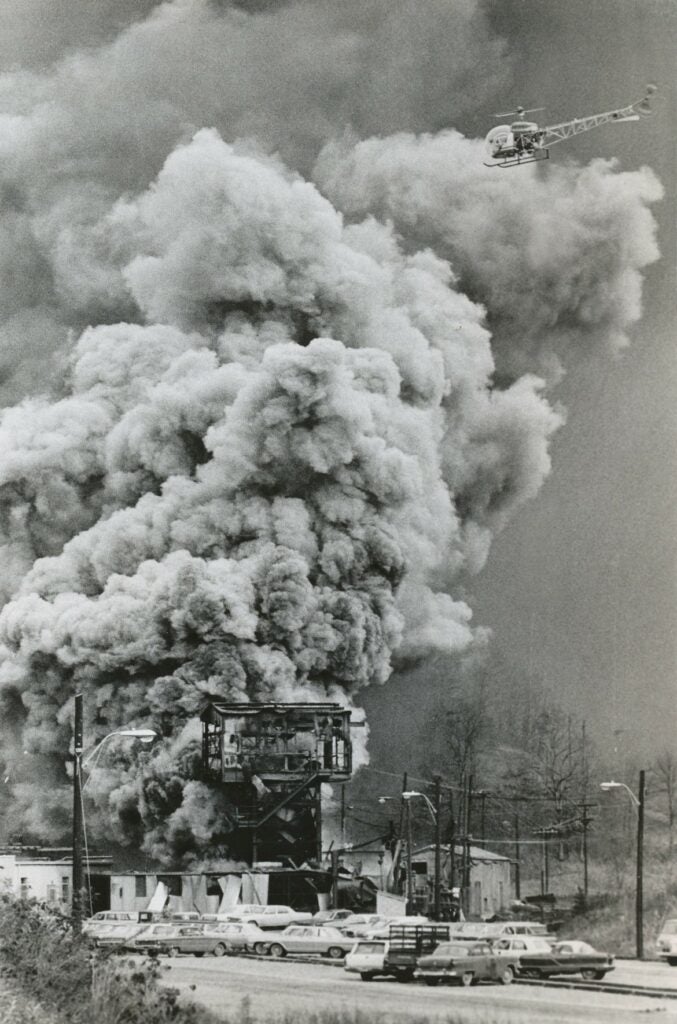
“…there was a major mine disaster in Farmington, West Virginia that killed 78 miners. And it was televised. So for the first time, just as they are seeing broadcasts of the war in Vietnam, people across the US are also now seeing this coal mining accident up close: families with people in the ground who were not going to come back up.”
Photo: Farmington mine disaster, November 20, 1968. West Virginia University Libraries.
And so there was this general resolve to do something more about health and safety, stimulated by some disasters, and also this at a time when there was a lot of reform in the air. The EPA was also established around the same time in 1970 because of choking air pollution in cities, and poor water quality, and communities were saying, Enough!
I read recently that the Harvard Chan ERC as the distinction of holding an early NIOSH grant, is that right?
DC: Yes, in the very 1st year of NIOSH, we’re one of several ERCs that started in 1977.
Similar to the NIH, NIOSH has an intramural program and extramural program, and the intramural program is about 1,300 people. So those are the people doing primary research at NIOSH. They do things like respirator research. For example, during Covid, that was who was telling us which N-95 masks to wear because they were NIOSH certified. If they weren’t NIOSH certified, they’re not guaranteed to work.
And then NIOSH has an extramural program. That’s where the ERC comes in. The extramural program sponsors grants to universities and other institutions for research projects and for education and training.
These centers are able to specialize for the needs of their regions. For example, in Boston, our biggest industries, by far, are healthcare, construction, and education, and followed by things like financial services. And so in this region, our research and training focuses a lot on issues affecting workers in those particular industries: people working in labs and offices.
Our ERC has also been involved with educating fishermen here in New England, because it’s also a very high, hazardous industry. Forestry and fishing have the highest mortality, even more than mining right now in this country. And we support this industry through outreach to fishermen associations and societies in New Bedford, MA and Gloucester, MA and throughout Maine. The outreach is really about sharing best practices for healthy design: life saving materials, anti-entanglement devices, better engine designs, and other improvements. And generally fishing boats are small businesses: captains run their own boats that have been in the family for years. They need resources so they can modernize their boats and do it in a safe way.
But in other parts of the country, Centers focus on different issues. So, for example, in Colorado they’re dealing with nuclear energy workers and nuclear weapons, production workers, and radiation. In other regions the focus may be more on mining, manufacturing, or agriculture, etc. That means, all together, through this system we have a very diverse and robust network of training, education, and research training many different industries.
I think many people don’t think about NIOSH or OSHA affecting them if they are not working in a mine or in a factory? What are some of the ways that NIOSH is supporting other industries?
DC: Of course, manufacturing is only about 8% of the total workforce. Most of the workforce is actually in things like healthcare, professional business services, universities/schools and retail. And for those industries, for sedentary work, the problems we see are mostly things like musculoskeletal disease: joint problems, back problems, neck problems, shiftwork problems, reproductive, respiratory disorders, and so on. And, to respond to that NIOSH has shifted its inside and extramural focus towards the safety and so-called ergonomic factors that relate to those industries.
But also, especially in Boston, another big chunk of the workforce that parallels manufacturing, is construction, as you know, cities like Boston have lots of construction. Construction makes up about 5% of the national workforce, but it’s a disproportionate number of injuries and deaths compared to other industries. So, construction has always been a big focus as well for research and prevention of injuries.
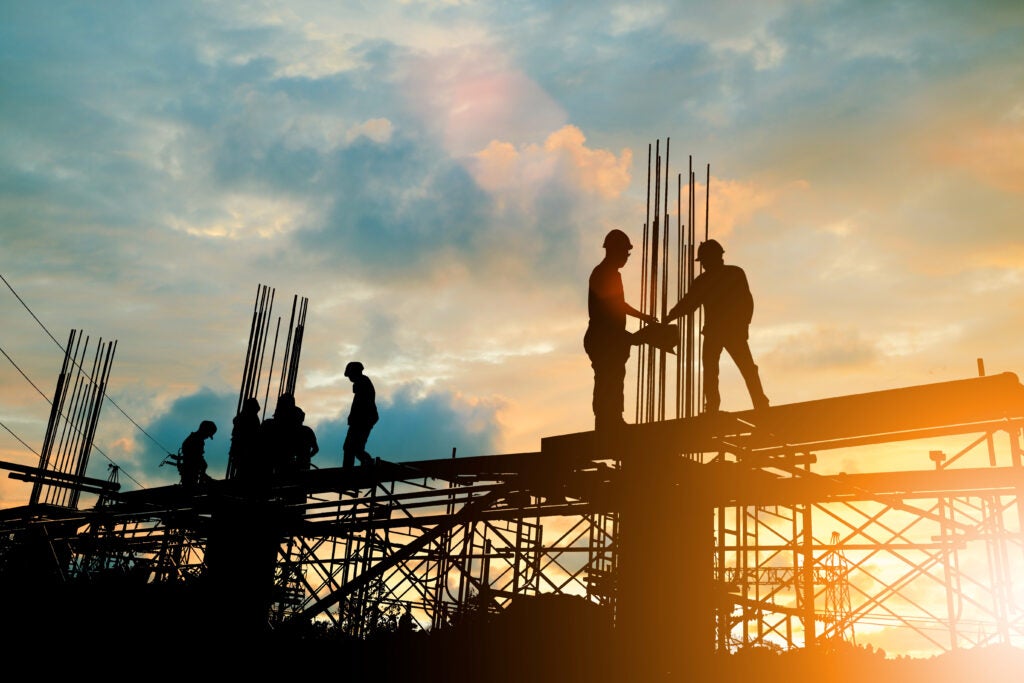
“Construction makes up about 5% of the national workforce, but it’s a disproportionate number of injuries and deaths compared to other industries. So, construction has always been a big focus [for the ERC] … for research and prevention of injuries.”
Finally, hospitals, and universities make up a large part of the workforce in this region — allergic conditions, blood-borne disease prevention, animal bites and other infectious concerns, asthma, skin conditions, and musculoskeletal and reproductive hazards are all active areas of research in NIOSH-related centers such as ours.
How did you personally get started in the field of Occupational Medicine?
DC: I was trained on one of our ERC’s first training grants back in 1979-81. After I finished my internal medicine training here in Boston, I was interested in lung disease and in lung toxicology, then I saw an ad at school for a fellowship that would lead to an MPH and certification in preventive occupational medicine, and that it was supported by this thing called the ERC and NIOSH. At the time, I didn’t know what either one of them was. I came and interviewed, and was really excited about what they were doing. If it wasn’t for the ERC and the training grants, I wouldn’t have gotten into occupational medicine.
Once you started working in this field. What got you excited about the work?
DC: One of the big things I was studying was organic/vegetable dust, cotton textile dust in particular, and exposure in the lungs. The lung disease in those industries and agricultural environmental was different from what we were seeing in coal or asbestos. I had an R1 with NIOSH for more than 35 years to do this cohort study of textile workers in China that just completed a few years ago.
And fortunately, we also managed to finish a 40-year follow-up study of textile dust exposure, and it was important because it’s the same kind of exposures we have in grain workers in the US, and even workers in places like waste treatment centers. And because there’s bacteria that gets released, this work even has applications in schools and daycare centers. So, what started as research on textile workers became a kind of endotoxin-related research.
I also did work on welders jointly with NIOSH and NIEHS on the effects of welding fume particulates on inflammation of heart vessels and lungs. And all this work continued for decades actually right up until a few years ago, and NIOSH supported part of this work.
What do you think the risk is to public health with all these cuts to NIOSH?
DC: I think it would be pretty devastating, because what’s going to stop is not just the flow of research information — which in this country has always been important — but also the practice of occupational health. Whether it’s regulatory reform or advice to companies on how to do things safely, this advice depends on having up-to-date knowledge. When you stop doing research and education in any field is you’re going to retard the development of up-to-date methodologies to keep people safe. I think it’s inevitable that you’re going to see increase in injury and illness in various sectors of the workforce.
The other danger is the knowledge generation will disappear.
What’s at risk is not just the NIOSH employees themselves, but also the extramural program which is training physicians and hygienists, epidemiologists, safety specialists, and occupational psychologists across the country. Once the training pipeline stops and people start retiring, you will not have the expertise for the companies to employ people to help them keep the workforce safe. So, I expect, [employers] insurance costs will go up, absenteeism will go up, quality of work life will go down.
We can lose, you know, a whole generation of professionals, and you have to start over again, and we’ll take a long time to rebuild this, to get back to where we are now.
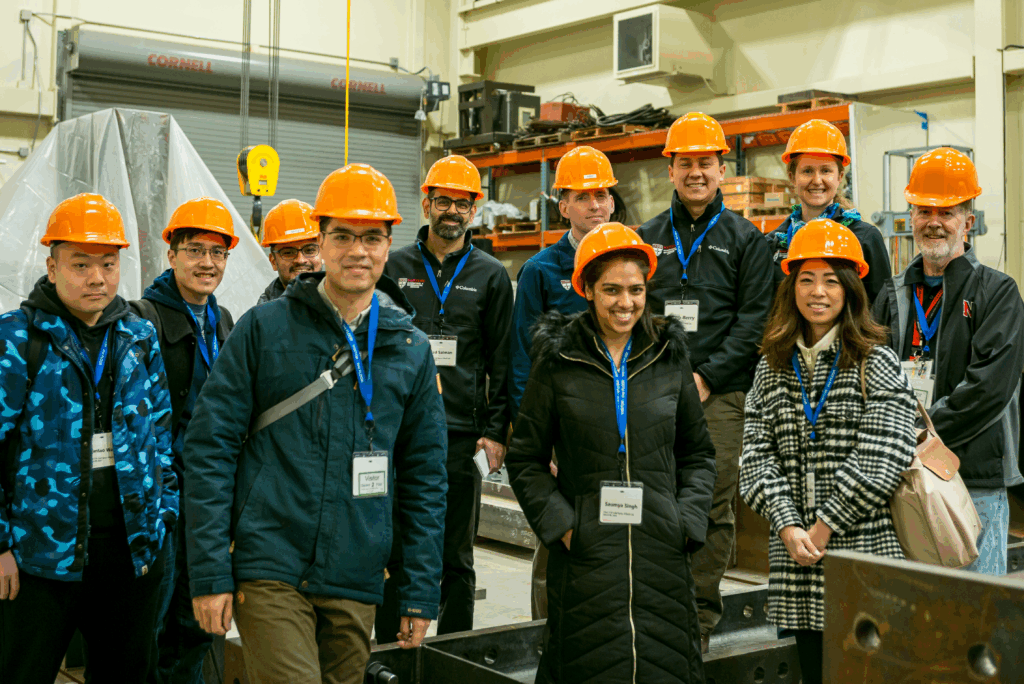
Since ultimately these cuts are about improving the bottom line, what would these losses mean for employers and the economy?
DC: Absenteeism, loss of worker productivity, and compensation claims increasing. So, insurance costs going up. I think that’s just inevitable, because we’ve seen this in the past with state to state variation. When you have state OSHA programs that vary, you have different rates of injury and illness in those different communities. And NIOSH is the one providing the information either directly or through ERCs like ours.
So, for example, if we have another pandemic and then we’re not going to have the respiratory research lab working to get us the best information we can. NIOSH designed the method [during COVID] of how to reuse masks and sterilize the masks when we had a PPE shortage. And they did it within weeks. Who will do it now? I just don’t know who would step up and do it.
Why is the field of occupational health so important?
DC: Let’s compare to maternal-child health. We all think maternal child health is very important, right? You want to have healthy kids and then healthy kids grow up to be the workforce of the future. So, one could argue, you want to have a healthy workforce. You certainly want to have healthy kids, but you also want to have healthy working age people, if you’re going to be productive.
Occupational health, in a way, bolsters the general health of the population. So, the improvement is not just for their productive lives, but even in their post-retirement lives.
Do you think there’s an impact on the occupational health field with the demographic cliff of boomers retiring and the workforce shrinking, already? Does this compound that issue?
DC: Oh, it definitely compounds the issue. We know across the board that professionals in the boomer age as they leave that the need is bigger than what we’ve been able to feed the pipeline. But, it’ll certainly even worse if that pipeline goes to 0.
That’s true across the board for scientific research, by the way. Even before this funding crisis we’re in, we did not have enough people trained to do the kind of things we want to do in research in general, in biomedical science. My colleagues here in HSPH doing work on conditions like tuberculosis, environmental pollution, forever chemicals in our products and the risks of reproductive, cancer, and immunologic disorders, global environmental health, nutrition and sustainability, etc. are all threatened, and I feel solidarity with them.
What do you think is the biggest threat to the ERC and this field in general?
DC: The strength of the ERC is our trainees: our master’s students, our MDs, our PhDs, our post-doctorate trainees. They’re our hope. They are our future. So, I think, rather than any particular research topic, they are the future. And it is all being threatened right now.
